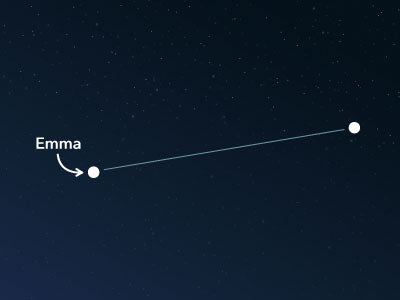The constellation Sextans
Caratteristiche
- Nome latino
- Sextans
- Emisfero
- Entrambi gli emisferi
- Visibilità
- January - May
- Area
- 314 deg²
- Stella più luminosa
- α Sextantis (HIP number 49641)
- Specialità
- Galaxies

The Sextans, the Latin name for an astronomical sextant, is an inconspicuous constellation located on the celestial equator. It was introduced at the end of the 17th century. There are only a few exciting deep-sky objects in this area for observation.
Hemisphere, visibility, and area
The Sextans constellation stretches across the celestial equator and is visible in the northern and southern hemispheres. It is fully visible between 79° N and 84° S. In the northern hemisphere, it can be seen as far north as the Norwegian archipelago of Svalbard (Spitsbergen) or areas of Greenland. South of the equator, it can be observed in many places except for around the South Pole in Antarctica.
The months of January through May offer the best conditions for discovering the constellation in the night sky. It appears with a size of about 314 square degrees, ranking 47th in comparison to all other 88 constellations.
The constellation contains only faint stars, none of which are brighter than 3 mags. Typically, two to three stars are used for visualization on star charts. They are either connected to form a straight line or form an open triangle. The brightest star is α Sextantis (Alpha Sextantis), which has an apparent magnitude of only about 4.5. It is a white-blue shining star located about 287 light-years from earth.
The dim stars make the Sextans very unremarkable and challenging to find in the sky. Therefore, the adjacent constellations can provide a good orientation. To the north is the distinctive Leo constellation, which is particularly well-known in astrology. To the east and south stretches the elongated Hydra. And to the west is also the inconspicuous Crater.
Specialties in the constellation
The Sextans constellation contains several galaxies within its area in the sky. The brightest of these can already be observed with a small telescope.
This is the lenticular galaxy with the catalog number NGC 3115, also known as the Spindle Galaxy (not to be confused with the object M102, which is also often mentioned under this term) or Caldwell 53. Estimates suggest that it is located about 22 million light-years away from the Milky Way. In the center of the galaxy lies an exceptionally massive black hole, which corresponds to roughly two billion solar masses. The German-British astronomer William Herschel discovered NGC 3115 in February 1787.

History
The star group was first mentioned in 1643. The monk Anton Maria Schyrleus de Rheita grouped the stars under the term "Sudarium Christi" (Christ's Veil), but this term never caught on.
Ultimately, it was the Danzig astronomer Johannes Hevelius who introduced the constellation in 1690 with the name that is commonly used today. The constellation is said to resemble the large sextant, a large angular measuring device in astronomy. The device stood in his beloved observatory, which was completely destroyed by a fire in September 1679.
Like all of Hevelius's constellations, the Sextans is very inconspicuous in the night sky.
PubblicatoLeggi altri articoli interessanti

An overview of all 88 constellations
Learn more about all 88 constellations and read interesting information about the mythology, visibility, and features.

App Planetario
Discover the night sky with our planetarium app!
Available for iOS and Android.

Dai un nome a una stella nella costellazione Sextant
Name a star in a constellation and create something that lasts for eternity.